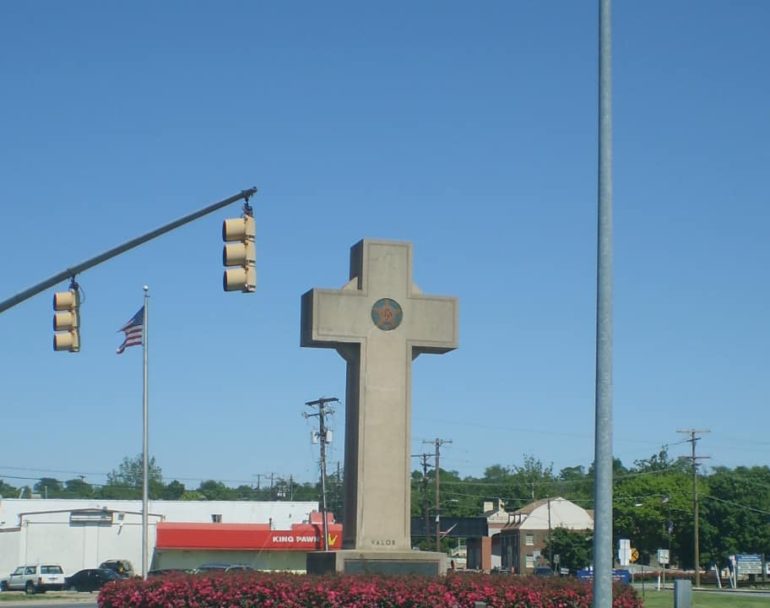
The Bladensburg Cross and the Wall That Couldn’t Stand
By: Jackson Pemberton
There is a reason that the “wall of separation between church and state” cannot take down the Bladensburg Peace Cross memorial. Yet, even SCOTUS seems unaware of the fundamental, profound conflict hidden in that so-called wall.
First a little background.
The Bladensburg Cross is a 40-foot tall memorial to World War I war dead that stands in a major intersection in Bladensburg, Maryland. The American Humanist Society sued to have the monument torn down or moved because they claim it violates the separation of church and state. The case is now pending before the Supreme Court. According to media reports, the Court seems to be looking for a “narrow way” to allow the monument to remain.
“USA Today‘s Richard Wolf says that the justices may opt for middle ground here because they know crosses like these are unconstitutional, but they also don’t want to deal with the firestorm of taking this one down. Wolf said they may decide to “grandfather” in the Bladensburg Cross, allowing it to remain up because it’s been there for decades, while forbidding future crosses of the same nature.”
The case reveals the profound difficulties in legally maintaining this “wall” through federal courts and the inherent incongruencies in the very concept.
Let’s Keep This Simple
Some believe that God created man, others believe that man created God. We are all believers. Every human being has a world view, or belief system, or way of seeing things. It is the lens through which we view our universe and by which we attach value to things. We are each a “believer” at this most basic level. Indeed, it is so fundamental we live it every day but only rarely think of it. So –
The Wall of Separation Is Dead
It is at least clear that all of these various views have all the functional characteristics of religion. Each of us has our own mindset or viewpoint, and most of us try to win over converts to our way of thinking. It is proper to call these different beliefs “religions” because no one can prove his particular religion (let’s call a spade a spade) is the most correct view. They are all based on belief.
The final nail in the coffin that was once a wall, is this: We write a law with the goal of obtaining some public “good,” What is “good” depends upon the values of the belief system writing that law. Therefore, whether intended or not, that law imposes that religion upon the public. This means that secularism is not fully attainable. The issue is raised anew by a memorial to forty-nine men who died serving their country.
Meanwhile, the most profound symbol of life, the fetus, finishes off the wall. The abortion debate is undeniable proof of this collision of religion. And the wall of separation has vanished into the illogical oblivion from whence it came. We can never fully separate church and state. So what must we do?
Let Freedom Reign
No legal theory will permit any one religion to prevail under the US Constitution. But SCOTUS has ignored the vertical separation of powers and assumed jurisdiction.
But wasn’t it appropriate for the supreme federal court to act on federal constitutional issues? Yes and no. The tenth amendment’s plain language gave this jurisdiction to states, counties and cities. Not only that, the First Amendment says: “Congress shall make no law…”. But they have. That’s when SCOTUS should have told Congress: “unconstitutional – you have no jurisdiction”. (The judicially contrived 14th Amendment incorporation doctrine notwithstanding.)
My suggestion to SCOTUS is just back away and let the states deal with it. My suggestion to the states is to leave the issues to the counties. And to the counties: let the cities deal with these issues. When you visit Spain you expect to see crosses. So let the locals decide what the locals will see as they drive their streets. Let’s celebrate diversity. Let’s celebrate liberty!
It’s simple! Let’s have freedom!